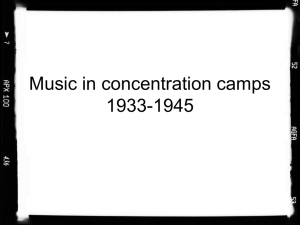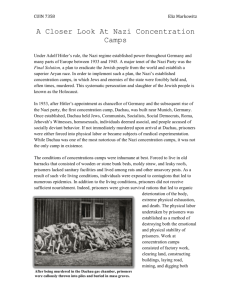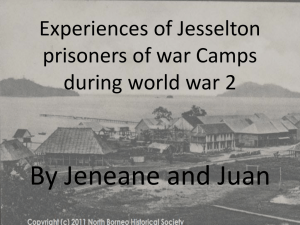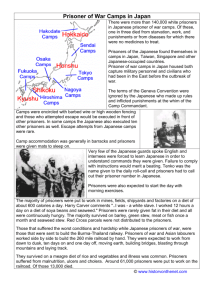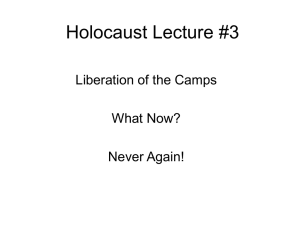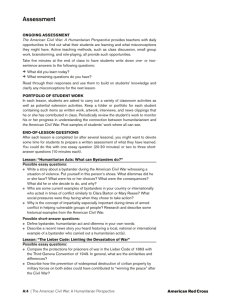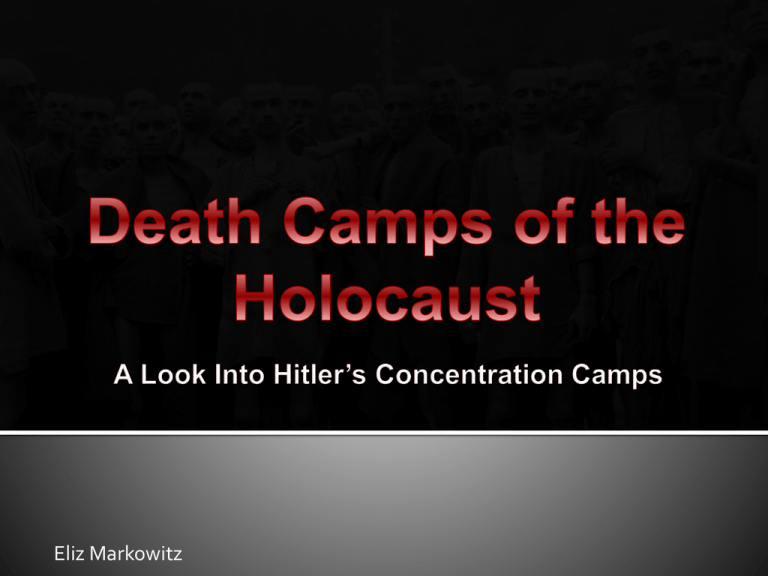
Eliz Markowitz
Purpose
Forced detainment of individuals under ruthless
conditions without consideration for human rights.
Implementation
Dachau, the first concentration camp, was built in
1933
Located in Germany, Holland, Austria, Poland,
Ukraine, Slovakia, Estonia, and the Czech Republic
HITLER’S “FINAL SOLUTION”
Create a superior Aryan race
Eradicate the Jewish people
from Europe through
imprisonment and mass
genocide
Eliminate all other “enemies
of the state”
▪ Communists, Socialists, and
Social Democrats
▪ Roma and Jehovah's
Witnesses
▪ Homosexuals and other
socially deviant individuals
PRISONER IDENTIFICATION SCHEME
Labor
Prisoners forced to do strenuous physical labor in atrocious
working conditions under the guidance of abusive soldiers.
Transit
Inmates collected and transferred to other camps
Hostage
Prisoners held and killed as retaliation
Prisoner of War
Individuals held and usually transferred to labor camps
Rehabilitation
Inmates re-educated in accordance with the Nazi’s social and
political views
Extermination
Solely existed for the purpose of murder. Upon arrival, all
individuals would be exterminated.
Transportation
Prisoners loaded onto cattle
trucks
Packed in tightly with no
food, water, or hygiene
facilities
Processing
Families separated and
personal belongings
confiscated
Prisoners forced to undress,
shower, and have head
shaved
Tattooed with a unique
prisoner number
Guards confiscate
personal
belongings from
newly arrived
prisoners at the
Jasenovac
concentration
camp in
Yugoslavia.
© 2011 United States Holocaust Memorial Museum
Barracks
Brick or wooden beds
with moldy straw
No heating or insulation
Vermin infested
Personal Care
No suitable sanitation
Limited water supply
High rate of contagions
that led to epidemics
and disease
Starvation Rations
Morning Meal
▪ Imitation coffee or tea
Afternoon Meal
▪ One liter of watery soup
Evening Meal
▪ 300 mg black bread
▪ Small piece of sausage,
cheese, or marmalade
Muzulman State
Deterioration of organs
that led to physical
exhaustion and death
Minimum 11-hour day of
strenuous physical labor
Factory
Construction
Ditch & grave digging
Mining
Laying roads
Weapon and chemical
production
People unable to work
were murdered
Appel—Daily Lineup
Roll call that occurred
every morning and
evening
▪ Prisoners exposed to the
elements, such as snow,
ice, and rain, with only thin
uniforms for protection
Prisoners forced to
stand completely still for
hours at a time
▪ Movement led to beating
or death
Focused on enhancing
the survival of Axis
forces
Freezing Experiments
▪ Attempt to find treatment
for hypothermia
Seawater
▪ Attempt to turn seawater
into drinkable water
High-Altitude Experiments
▪ Individuals placed in a low
pressure chamber to find
effective range of
parachutes
Racial & Ideological
Eye Color
▪ Attempt to alter and
fabricate eye color
Twin
▪ Aimed at understanding
twin genetics in an attempt
to find a way to effectively
multiply the Aryan race
Sterilization
▪ Attempts to create
efficient ways of sterilizing
men and women to halt
unsavory reproduction
Pharmaceutical testing
and ‘injury’ treatment
Immunization
▪ Experimental treatment for
malaria, typhus, typhoid,
hepatitis, yellow fever, and
tuberculosis
Bone, muscle, and joint
▪ Study the effect of limb
transplant post- amputation
▪ Removal of sections to study
regeneration
Poison
▪ Testing of phenol and cyanide
to study reactions
Physical exhaustion, malnutrition, and disease
Shooting
Prisoners would be forced to dig their own graves and
were then executed
Gas chambers
Carbon Monoxide and Hydrogen Cyanide poisoning
Lethal injection
The preferred method of execution for the 1.1 million
children murdered in camps
Medical Experimentation
If individuals survived the experiment, they would be
murdered for the purpose of conducting an autopsy
In July 1944, Soviet
troops arrived at the
Majdanek camp in
Poland.
Germans tried to hide
evidence of genocide
Demolished camp
Murdered remaining
prisoners and burned
down crematorium
Failed to remove
evidence of mass murder
Soviets liberated
Auschwitz, perhaps the
most notorious death
camp, in January 1945.
U.S. and British forces
liberated Buchenwald
and other German camps
in April 1945.
Approximately 80,000
prisoners were liberated
prior to the conclusion of
the war.
Only a small percentage
of prisoners survived.
Survivors looked like
skeletons due to the
physical demands,
malnutrition, and
maltreatment.
Disease remained a danger
Many survivors died postliberation due to the
effects of internment.
United States Holocaust Memorial Museum
Jewish Virtual Library
NOVA Online | Holocaust on Trial | The
Experiments
The Holocaust – Labor and Concentration
Camps –Yad Vashem
Nazi Concentration Camp Records: Story,
Pictures, and Information


